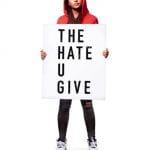(Contextual Presentation) A Small Place, Kincaid
Within the book “a small place” Kincaid mentions the prevalence of corruption in Antigua. Kincaid speaks on the fact that the government ministers run brothels, steal public funds, and participates in broker shady deals. I researched this article “ the effects of political corruption on Caribbean development” by Michael W Collier and it mainly touches base on the same points on corruption. It states “Every state in the Caribbean is affected by the illegal drug trade. Some states such as Jamaica, Trinidad and Tobago, St Vincent, and St. Lucia are drug producers growing local marijuana crops. The larger role of Caribbean states are as drug transshipment points for illegal cocaine and heroin shipments bound from South American drug producing countries to markets in the United States and Europe. The mixture of corruption and drugs creates a vicious cycle of crime and violence that is engulfing many of the small Caribbean states. Corruption is what allows the illegal drug trade to flourish. Drug money payoffs to government officials, police officers, and justice system officials cause these officials to “look the other way” as the drug gangs go about their business on many Caribbean states.”
Kincaid also dives into the ugliness of tourism and points out the loveliness of the places that tend to attract tourists is often a source of difficulty for those who live there. For example “ the sunny, clear sky of Antigua, which indicates a lack of rainfall, makes fresh water a scarce and precious commodity.” To compare this article “the impact of tourism in the Caribbean” covers the same topic as Kincaid does in the book, it states “Damage to the physical-biological environment will occur with increasing densities of both tourists, and local residents. Unfortunately most rainforest in the smaller islands is already in a state of dis-equilibrium, so that unless the movement of people is very strictly controlled, this most valuable resource will degenerate very rapidly. Where a large tourist resort is allowed to extend a beach artificially the new promontory may interfere with local currents in such a way that other beaches will be eroded. New hotels mean more effluents, more pollution, more deterioration of valuable coastal waters.”
Citations:
- Matthews, Harry G. “Radicals and Third World Tourism: A Caribbean Focus.” Annals of Tourism Research, Pergamon, 6 May 2009, www.sciencedirect.com/science/article/pii/S0160738377800066.
- Author links open overlay panelTheo L.HillsJanLundgren∗, et al. “The Impact of Tourism in the Caribbean: A Methodological Study.” Annals of Tourism Research, Pergamon, 30 Sept. 2002, reader.elsevier.com/reader/sd/pii/0160738377900986?token=1773AECBADE381606449A2893541D4E608C0EA0E08D214E72C1C615DFB69430EBFE4622E969C506C2C9E3D43DEF54996&originRegion=us-east-1&originCreation=20210415021523.

